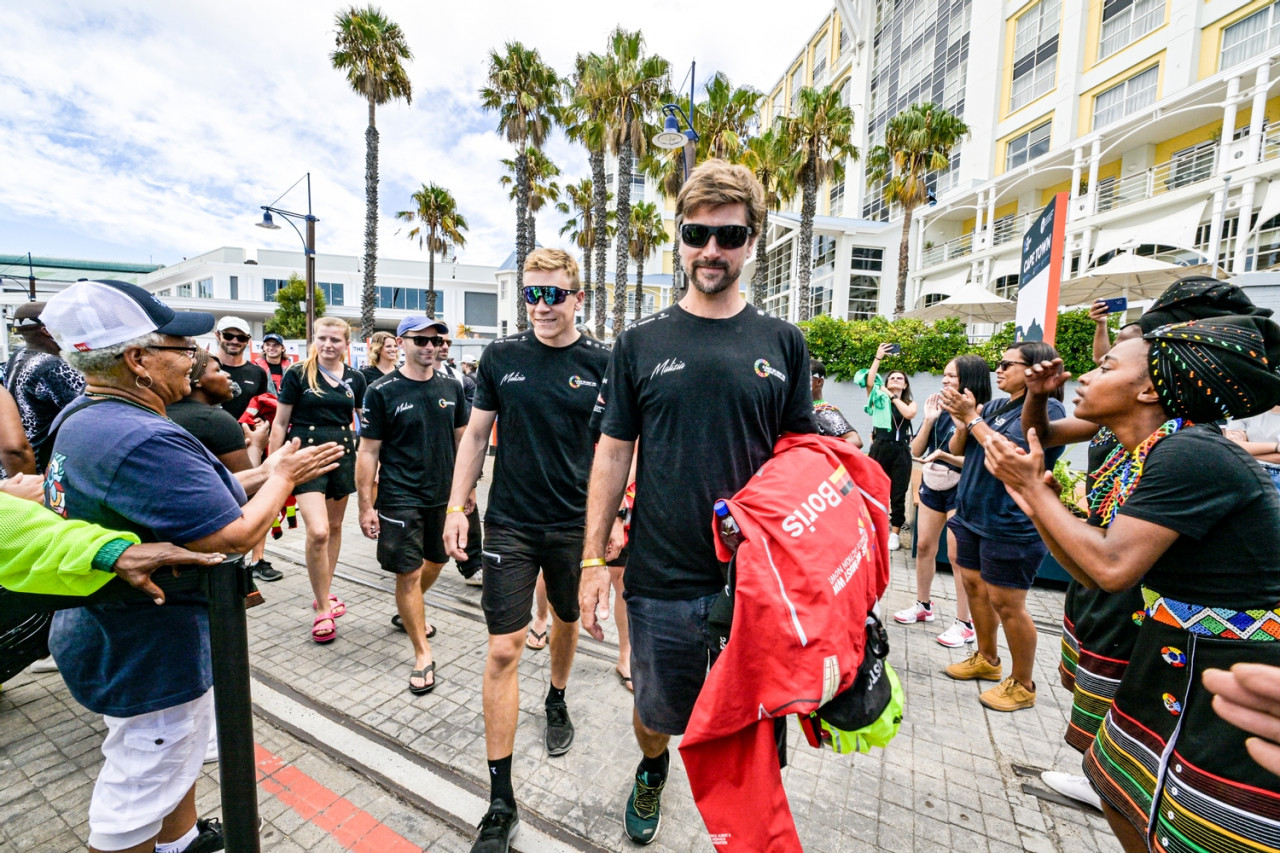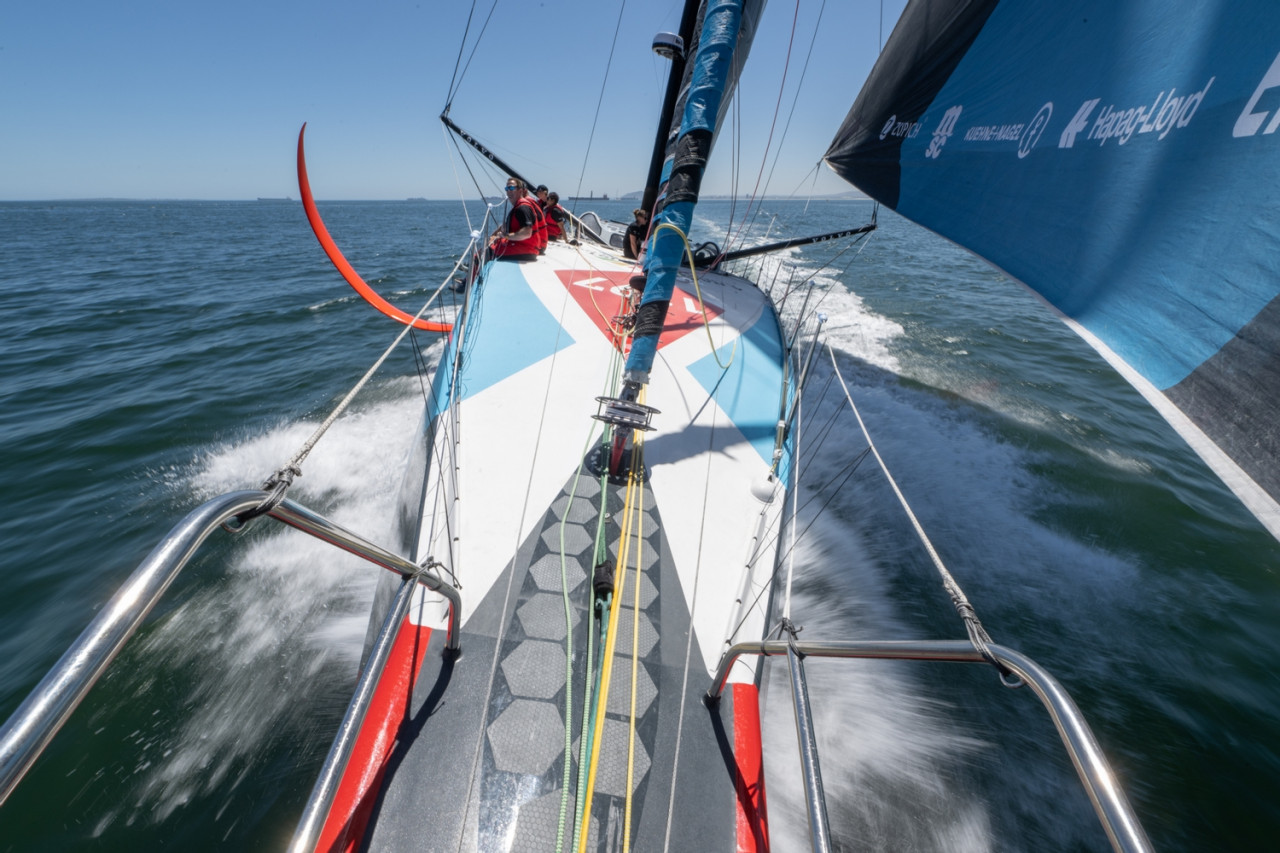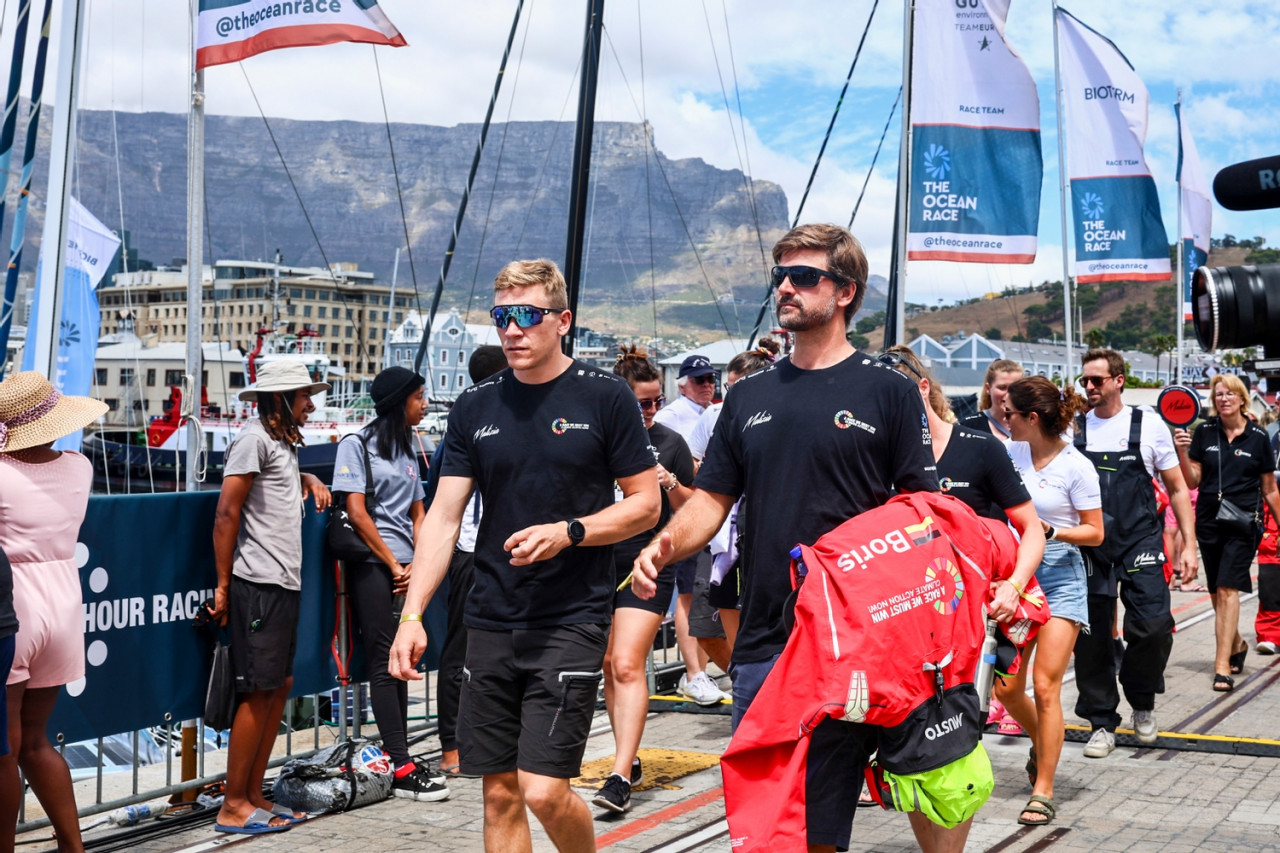Boris Herrmann: “I’m back and ready to face the challenges of the Southern Ocean”

German sailor Boris Herrmann has recovered from his foot injury and will be back skippering Team Malizia’s yacht in the rough seas of the Southern Ocean, this time with a crew and with high hopes for a good result.
Only two days left before the start of the mammoth leg of The Ocean Race. Team Malizia and the four other IMOCA teams will leave Cape Town this Sunday at 1415 hours local time and set sail for a 12,750 nautical mile journey around Antarctica to Itajaí, Brazil, facing the difficult conditions of the Southern Ocean. German sailor Boris Herrmann, who sustained a burn to his foot at the end of Leg 1, and was forced to sit out the second leg, will be back on board Malizia - Seaexplorer. “My foot is healed now,”explains Herrmann. “Thanks to the crew taking over and Will stepping in as skipper, I had the time I needed to recover, and I also received great medical treatment here in South Africa. I am now 100% and very excited for the pinnacle leg of The Ocean Race.”
As soon as Malizia - Seaexplorer arrived in Cape Town on 12 February, Team Malizia’s shore crew lifted their race yacht out of the water for a very short but intense refit. Herrmann describes: “Mast off, foils off, rudders off… The boat was taken apart, even to the smaller components like mechanics, hydraulics, electronics… About 30 people were doing the job in 5 days which we usually do in 4 months. Huge respect to the team for having pulled this off and relaunched the boat in time.”
 © Ricardo Pinto / Team Malizia (Ricardo Pinto / Team Malizia (Photographer) - [None]
© Ricardo Pinto / Team Malizia (Ricardo Pinto / Team Malizia (Photographer) - [None]
Besides checking, repairing, and preparing the boat for the challenging conditions of the Southern Ocean, the team also worked on the appendages of the boat, aiming at reducing the noise the crew was facing during the previous leg. “At higher speeds, the keel, the rudders and the foils vibrate, which resonates in the hull and is extremely loud,”adds co-skipper Will Harris. “The team made changes to the trailing edges of these appendages and, during the last days sailing for the Pro-Am speed runs, we have already found that when the boat goes at high speed it is a lot better.”
Boat and team are now ready for the upcoming leg, the longest in The Ocean Race’s 50-year history with 12,750 nautical miles to sail in extreme conditions. “Leg 3 is the pinnacle of The Ocean Race,” says Herrmman. “It is basically half a Vendée Globe, it is more than halfway around the world and it is through the challenging waters of the Southern Ocean.” This leg is also an opportunity for the competitors to grab double points: “This leg is kind of divided in two, with a gate near Australia, acting as a sort of finish line and start line for the remaining distance to Brazil”, adds the German skipper. “Five points can be grabbed for each, 10 in total, and we hope to collect as many points as we can. Our boat is optimised for these Southern Ocean conditions and has proved that it can be very fast, so we have high hopes and are confident but also remain realistic.”
Co-skipper and expert navigator Nicolas Lunven adds: “The goal when leaving Cape Town will be to catch the dominant westerly winds of the Southern Ocean. However, there is usually a high pressure system blocking our path so we have to get through it well. After that we will witness the strong winds of the Southern Ocean which are not so much a strategic challenge but more of a boat management challenge, of knowing how to push the boat without breaking everything. After that, there are potentially several weather transition zones, often under Australia, New Zealand, or as we approach Cape Horn. These zones can be more complex because of the interference between the oceans.”
“I’m looking forward to the very unique impressions of the Southern Ocean,” says Herrmann. “The very long swell, long sunrises, sunsets, the short nights, it’s kind of cold, it reminds me of Northern Germany, to the albatrosses flying with us, and Cape Horn of course. It is both a beautiful and a wild and dangerous place. Cape Horn is special to me, I sailed five times past this historical landmark. I think only Simon Fisher sailed it as many times as me amongst this year’s competitors. When you see the iconic shape of the cape you know you overcame a very challenging passage.”

“This Southern Ocean leg is also exciting in terms of science data,” explains Harris. “For many years, we have been carrying the Ocean Pack on board, which is a mini laboratory measuring ocean data. Now, we will race in the most remote areas in the world where there is hardly any scientific data collected. Our Ocean Pack will be running nonstop and measuring sea surface CO2, temperature, and salinity, which I find really exciting. I studied oceanography and started to understand the scientific models of the Ocean and how climate change is impacting it. It is great to now contribute to these models in this way.”The team will also deploy two drifter buoys on their way to Brazil. These instruments float at the ocean surface, where they gather data on ocean currents that is transmitted by satellite to science organisations.
Team Malizia’s A Race We Must Win – Climate Action Now! mission is only possible due to the strong and long-lasting commitment from its seven main partners: Kuehne+Nagel, MSC Mediterranean Shipping Company, Hapag-Lloyd, Schütz, the Yacht Club de Monaco, EFG International, and Zurich Group Germany. These partners band behind Team Malizia to support its campaign, each of them working towards projects in their own field to innovate around climate solutions.
Source Team Malizia
Teams info
THE LIST OF 40 SKIPPERS UNVEILED
The 2020 edition of the Vendée Globe has generated unprecedented interest. As a result, the organisers decided to increase the number of places at the start to 40 for the 2024 edition. 44 skippers applied for this 10th e…
•••Charlie Dalin: The podium in IMOCA is much harder to reach now
Charlie Dalin has particularly enjoyed his convincing win in the New York Vendée-Les Sables d’Olonne race. And that’s partly because he knows that even getting on the podium in the IMOCA Class is becoming more difficult.
•••